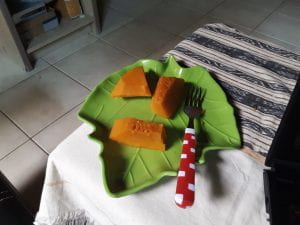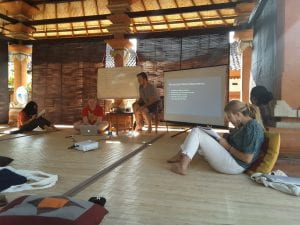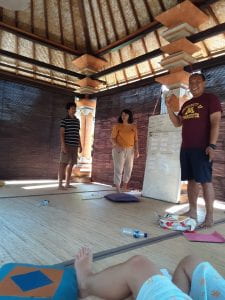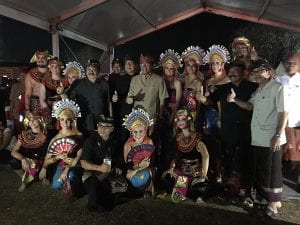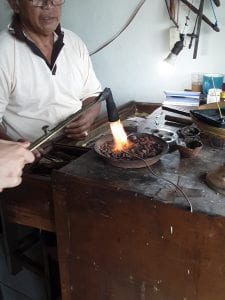Although the words are here, I’ve struggled for days about how to represent this part of my experience this semester. It is very negative, and I would rather forget about it entirely. But it is nevertheless undeniable.
The short version is that I missed my first flight to Sumatra. I intended to travel there in order to study Batak ulos-weaving and ulos’ social function among the villages surrounding Lake Toba. Due to complications with my VISA, I was refused during check in; and due to complications with my phone’s network connection at the airport, I was unable to cancel my flight with my agency in time to receive a decent refund. Worse, the whole situation occurred around 1:00am in the morning. My exhaustion compounded upon everything else.
Thankfully, the SIT Indonesia Program Director Ni Wayan Ariati graciously opened her home to me for the next few nights while I acquired another plane ticket. Because of her generosity, I was able to spend a couple days reorienting myself and rearranging the schedule of my field study.
Because of the delay, I would only be able to remain in the Lake Toba area for a mere eight days before my second flight to Jakarta, during which I planned to attend a conveniently timed museum exhibition on ulos. At the same time that I was wrestling with my planned schedule and managing the costs of purchasing yet another plane ticket, my computer began to fall apart—literally. As of now, it’s being held together by the strength of my fingers and gravity—I’m looking into duct tape.
If there’s one thing that I have learned from this misfortune, it is to always prepare for the worst. If not literally, then mentally. Conceiving backup plans and emergency action plans for worst-case scenarios both reassures me in the moment and preps me to handle sticky situations should they pop up. All in all, mental preparation at the very least helps to alleviate my newfound anxieties with the ISP period, as well as helps to avoid the downfalls of over-confidence.
As I walked into the airport for the second time, my mood markedly contrasted the first. Whereas before I embarked with such excitement and confidence (despite my tiredness), the second experience seemed far colder. While there was still some part of me that anticipated my field study and yearned to learn, at the time I could only see the hurdle that was travel.
Thank you, and until next time.


